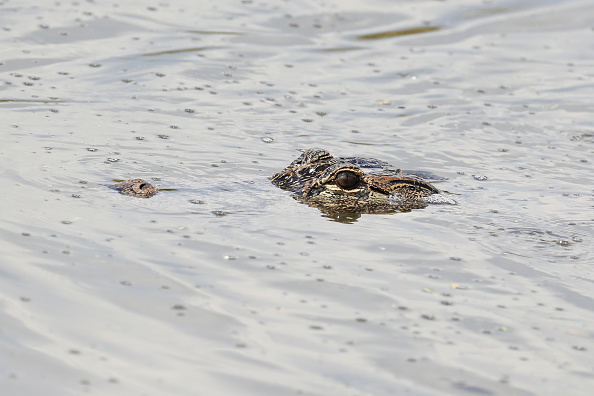RALEIGH — People are seeing alligators in North Carolina. But where?
That's the focus of a citizen science project from the N.C. Wildlife Resources Commission.
Anyone, whether a resident or visitor, who spots an alligator in the wild in North Carolina is asked to upload and share their photos on the project titled “NC Alligators,” which launched today on the free online platform iNaturalist. People can upload their photos via a computer at iNaturalist.org or they can download the free iNaturalist app, which is available for iPhone and Android.
“Submitting an alligator observation is very easy,” said Alicia Davis, a natural resources technician with the Commission and the project curator. “If you see an alligator and can take a picture, you simply upload the photo to iNaturalist and add it to the NC Alligators project.
“If the picture you upload was taken with a smartphone, the iNaturalist platform automatically gathers data on when and where the photo was taken. If you take the picture with a traditional camera, you can drop a pin where you saw the alligator using the Google map on the website.”
Observers should exercise caution and keep a safe distance away when photographing alligators, Davis added. “It’s easy to get caught up in the excitement of seeing an alligator and get too close, which could be dangerous,” Davis said. “Also, we don’t want people feeding them to get a better picture. Not only is that dangerous for both the observer and the animal, but it is also illegal.”
The Commission launched the “NC Alligators” project to learn more about the distribution of alligators in the state. Currently, alligators have a natural distribution range of about 25 coastal counties in North Carolina, which is the northern extent of the alligator’s range. Previous scientific work has shown that researchers need to monitor alligators so they can better understand how alligator populations respond to habitat changes, such as saltwater intrusion, fluctuation in water levels, and habitat loss.
“Data collected from this project will also help us identify areas with high potential for human-alligator interactions,” Davis said. “We could use this type of information to reduce negative interactions between people and alligators. For example, these observations could help WRC staff decide where to focus educational efforts about alligators.”
People who want to report observations but do not want to use iNaturalist can send their alligator observations directly to Davis at alicia.davis@ncwildlife.org. The email should include:
- A photo of the alligator
- When it was observed (date and time)
- The location where it was found (GPS coordinates are best, but a detailed location description is acceptable)
- Estimation of size class: (Hatchling-3 feet, 3-6 feet, 6-9 feet, More than 9 feet or unknown)


